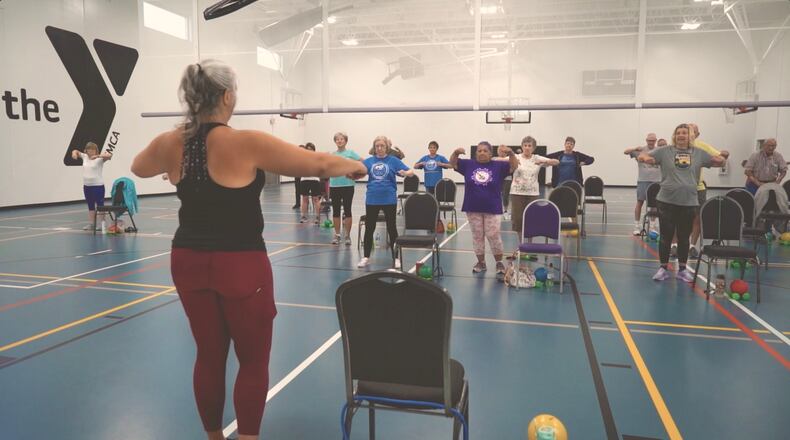“As we enter 2023, the results of this year’s survey could also very well be titled ‘post-pandemic recovery impacts the fitness industry,’” said Walter Thompson, ACSM past president.
For the second consecutive year, Wearable Technology is the top trend. Online Training – the top trend in 2021 – has dropped out of the Top 20. Fitness Programs for Older Adults returns to its highest ranking at No. 4.
Anne Crecelius, University of Dayton Health and Sport Science associate professor, shares her thoughts on a few of this year’s trends.
Wearable Technology
Lower prices for basic models and new models with enhanced features have helped wearable technology reach a greater number of people.
“Who benefits the most from wearables really depends on what the person’s health and wellness goals are,” Crecelius said. “Given how many different things can be measured and associated on smartphone apps, they can be helpful for menstrual tracking, fall alerts, irregular heartbeats, activity levels and more.”
There can, however, be a bit of a learning curve.
“A wearable is only as good as consistent use and meaningful interpretation of the data it provides,” she said. “The more advanced ones will require the user to be familiar with the associated smartphone app, whereas more simple ones can display metrics like steps or active periods of time.”
Fitness Programs for Older Adults
Programming for an aging population jumped seven spots from No. 11 in 2022 to No. 4 this year.
“Aging is inevitable and comes with a number of associated declines – aerobic capacity, muscle mass, bone density, mental losses, etc.,” Crecelius said. “The one thing that continually has been show to either slow the decline or give folks a higher place to start that decline from is exercise.”
With a growing percentage of the population at retirement age, a focus on fitness for an older demographic is also growing.
“As the population becomes more aged, and more people are concerned with their ‘healthspan’ (healthy years of living) versus just the lifespan, exercise for older adults will continue to be more and more popular,” Crecelius said.
Back to the Gym
While online training dropped significantly, trends like Training with Free Weights, Body Weight Training, Core Training and Circuit Training all moved up the rankings, indicating a return to some pre-pandemic fitness habits.
“The benefits of in-person training have definitely drawn people back to the gyms and fitness facilities,” Crecelius said. “I also think people got burned out of ‘screen time’ and are seeking out human-human interactions, particularly those who may have remained in a work-from-home model. There are still very popular virtual options – Peloton, Apple Fitness, etc. – but the draw of the routine of going to the gym is certainly motivating for some.”
ACSM Worldwide Survey of Fitness Trends for 2023
Wearable Technology. Fitness trackers, smart watches, heart rate monitors and GPS tracking devices, including tech that can monitor heart rate, calories, sitting time, sleep and more.
Strength Training with Free Weights. Activity that incorporates the use of barbells, dumbbells and/or kettlebells.
Body Weight Training. Techniques that focus on body weight as the primary resistance. Body weight training uses minimal equipment and space, making it an inexpensive and functional way to exercise.
Fitness Programs for Older Adults. Programming focused on the aging population and its unique needs.
Functional Fitness Training. Training to improve balance, coordination, functional strength and endurance to improve activities of daily living.
Outdoor Activities. Pursuits like group walks, bicycle rides or organized hiking led by health and fitness professionals.
High-Intensity Interval Training (HIIT). Exercise programs that typically involve repeated bouts of high-intensity exercise combined with periods of rest.
Exercise for Weight Loss. This trend incorporates weight loss programs like dieting and cooking classes with an exercise routine.
Employing Certified Fitness Professionals. Hiring certified health and fitness professionals who have completed educational programs and fully accredited health/fitness certifications.
Personal Training. Personal training includes goal setting, fitness assessment and exercise programming with a trainer in one-on-one settings.
About the Author


